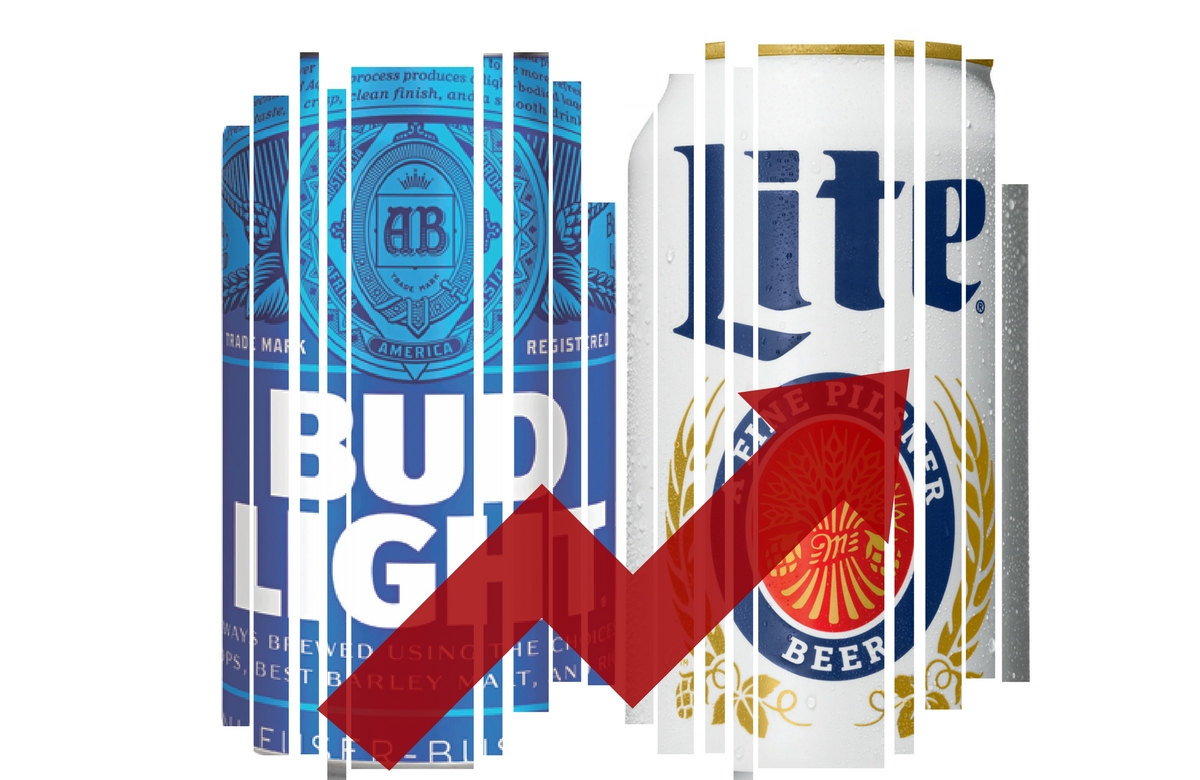Can American light lagers — the bread and butter of the beer industry for decades — return to growth? Executives of the two largest U.S beer companies on Tuesday said unequivocally yes.
How remains a point of debate.
Speaking on a panel hosted by the Beverage Forum in Chicago, Greg Butler, MillerCoors vice president of strategy and former vice president of the Miller family of brands, and Andy Goeler, vice president of marketing for Bud Light, drew stark distinctions between how they intend to lead their brands back into the black.
Goeler, the industry veteran tapped to reverse a decade of declines for Bud Light, the nation’s top-selling beer, laid out a vision of “bringing fun back” to light lagers, an approach that places continued emphasis on the brand’s “Dilly Dilly” campaign.
Butler, by contrast, advocated a “distinctive and meaningful” approach rooted in brand equity. That’s underpinned by the notion that most beer drinkers continue to seek light, sessionable beers that can be enjoyed during social settings. “For us, that means reinforcing the message that we believe we have the best-tasting light beer.”
For Miller Lite, which continues to tack on share in the segment, Butler said MillerCoors plans to continue focusing on product attributes, such as its heritage, its taste and carbs and calories.
Despite Butler and Goeler’s differing approaches, both marketers expressed confidence that each brand could return to growth.
Their confidence of a turnaround comes amid a difficult stretch for the category. After a tough 2017, volume of premium lights has continued to struggle in 2018, down 5.4 percent year-to-date through April 14, according to Nielsen all-outlet and convenience data.
Bud Light and Miller Lite’s struggles come as the beer industry as a whole has sputtered in 2018, down 1.6 percent year-to-date amid unfavorable weather in much of the country, slowing growth in craft, supply issues and continued pricing pressure from wine and spirits.
Goeler, who worked on Bud Light during its heyday (he was involved with the “Real Men of Genius” campaign), said at Anheuser-Busch, “we think beer has become just a little bit too serious.” The fun of beer, he said, “has been replaced with a lot of ingredients stories” where drinkers are “smelling and sipping beer” instead of gathering with friends and having a good time.
A central tenet of the brand’s solution was humor-based “Dilly Dilly” campaign, which kicked off in August with a “Game of Thrones”-inspired TV spot and has since followed up with several additional ads. While the catchphrase has moved through the zeitgeist and has entered the American cultural lexicon, it’s “useless if it’s not able to drive results,” Goeler said.
Although the beer’s volume remains stubbornly down 6.1 percent year-to-date, per Nielsen, Goeler said the campaign has elevated Bud Light in social conversations and cited data showing Bud Light has improved its “share of mainstream brands” in every month since it began the campaign.
“We have lots of plans to expand this as we move forward,” he said.
Butler, meanwhile, said Miller Lite continues to pick up share from Bud Light by focusing on its competitive attributes. “We believe we have the best-tasting light beer,” he said. That’s a message the brand will continue to hit on throughout 2018 as it ramps up its competitive edge versus Bud Light.
That message appears to be working. Miller Lite has gained 0.5 percentage points of share in the premium lights segment year-to-date through April 7, according to Nielsen all-outlet and convenience figures. That’s after Miller Lite snapped up 0.6 percentage points of share in the segment in 2017.
“We know we’ve got a great beer,” Butler said. “We’re playing in a great category that still loves our beer, and we’re starting to find opportunities that give us the confidence we’ll grow again.”

